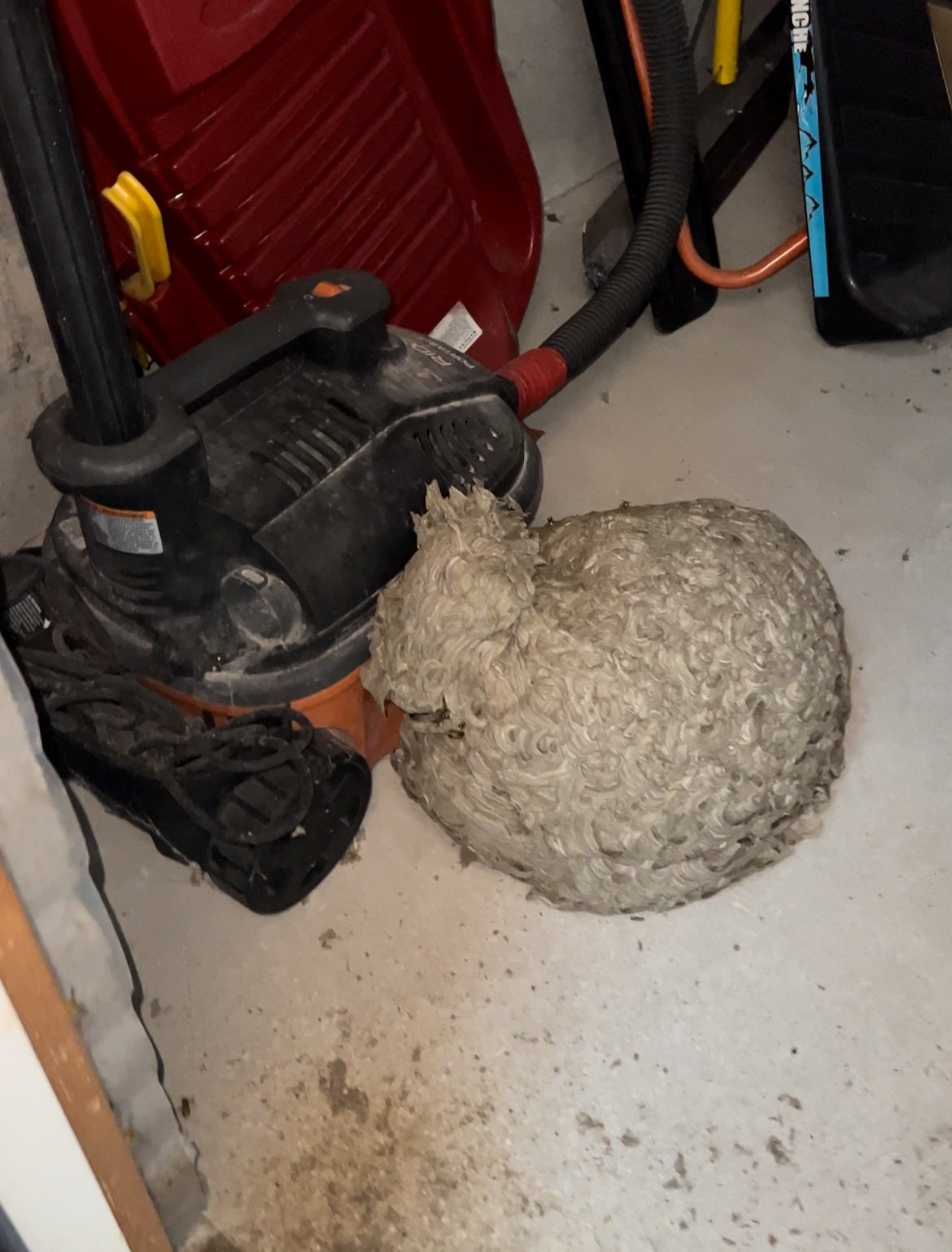Our Approach to Wasp/Hornet Control
Most Common Pest Wasp/Hornet Species in Ontario
The most common species of wasp/hornets to infest homes in Ontario are
Yellowjacket wasps
Paper wasps
Bald faced hornets
Mud dauber wasps
Also notably, though they are NOT wasps, and fall under the Bee’s Act; homes in Ontario occasionally experience
Carpenter bees
Bumble bees
Honey bees
Miner bees
Yellowjacket Wasps
Yellowjacket wasps are the most common pest wasp in Ontario.
They have a black and yellow body.
They are very adaptable and can either have an exposed nest, or they can also nest in wall voids and cavities. Their nest can grow almost indefinitely, and can become very large.
They are aggressive and can attack unprovoked
Their nests feature a full shell as seen below.
Paper Wasps
Paper wasps look similar to yellowjacket wasps but have a few key distinctions
thinner wings and less yellow
their nests do not feature a shell
their nests do not grow as large.
These wasps will sting unprovoked and are aggressive, but they are generally less dangerous because their nests do not grow quite as large
These wasps are known to “overwinter” and lie dormant during winter in attics, garages, barns , and remerge in the spring.
Bald Faced Hornets
Bald faced hornets are black and white in color. They are vicious and will sting relentlessly.
Their nest features a full shell, and is almost always exposed hanging from trees, and will not nest in a wall void or cavity.
Certain trees such as magnolia tend to attract hornets because they produce honeydew, especially when the tree is infested with “scale” insects.
Mud Dauber Wasps
Mud dauber wasps are solitary wasps, and they feed on spiders and plant nectar
They are beneficial insects, and are extremely unlikely to sting.
They live in mud tubes, and lay their eggs inside these mud tubes.
The negative consequence of mud dauber wasps is that they can nest on your home’s stucco, vinyl siding or brick, and create an eyesore that is difficult to clean
Usually in ontario, these wasps are blue in color, but can be yellow as well
What does our wasp treatment look like
Typically if pest wasp nest is exposed, we will treat with a spray or an aerosol. If wasp nest is in a void, typically we will treat with a dust
The best time of day to treat is typically after sundown, when wasps are resting inside nest, but it can be done during the day.
Why Not “DIY” it? Why call an exterminator?
Our products are more effective than commercially available products.
Often with commercially available products, you can find yourself re-treating and not killing off the entire pest wasp population. Our products have a “transfer effect”, where we can generally treat the wasp nest once, and wasps will contact the treatment and spread it to the colony killing the colony.
If the wasp nest is located at heights, we have the correct equipment to treat it.
If the wasp nest is very big, we have wasp/bee suit to protect ourselves.
What if i have wasps with no visible nest?
Usually when there is lots of wasps present, but no visible nest, there is usually one or more hidden wasp nests.
Typically these nests are inconspicuous areas that are sheltered from rain and weather, such as overhangs, in fences, in roofs.












